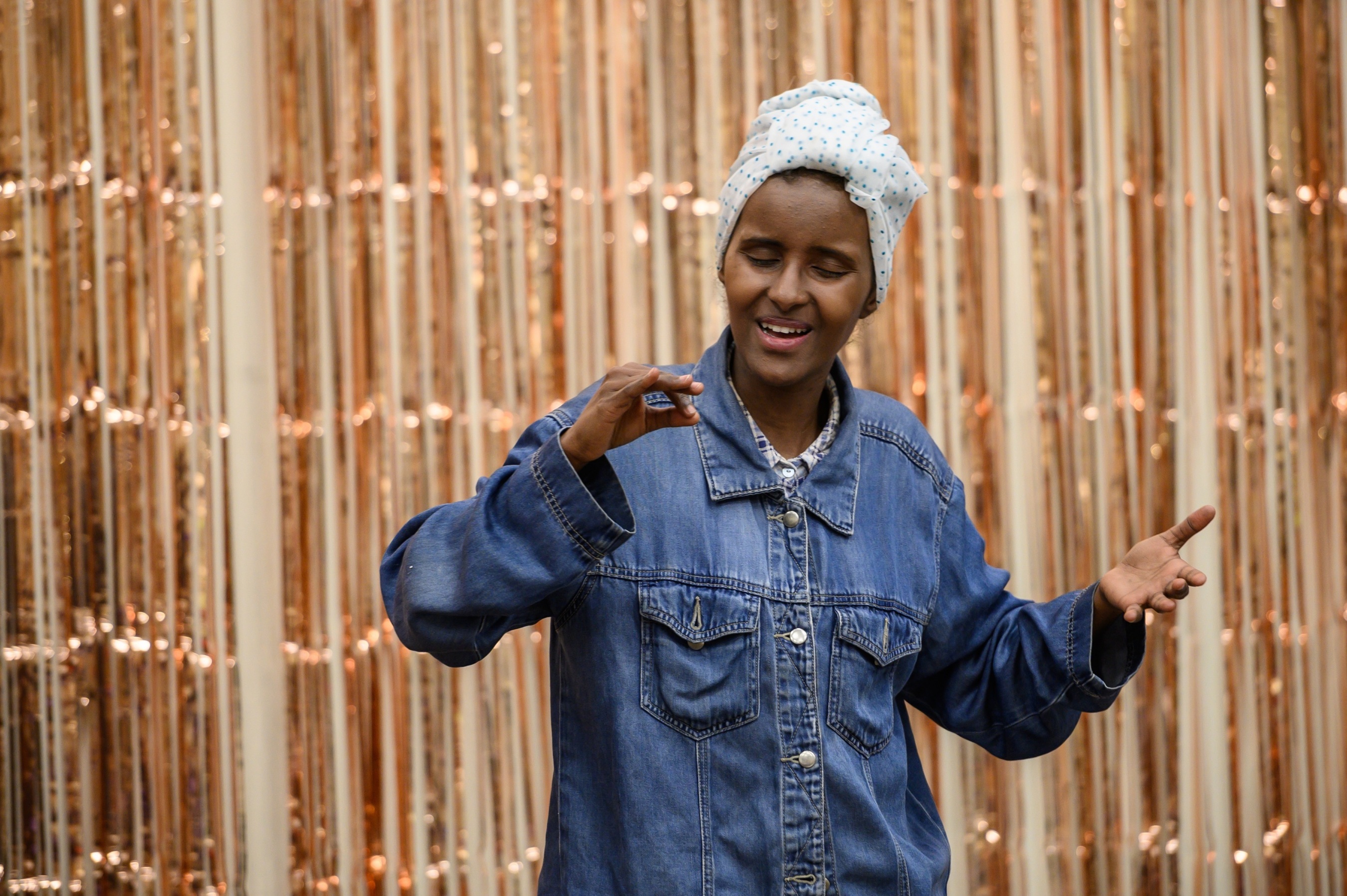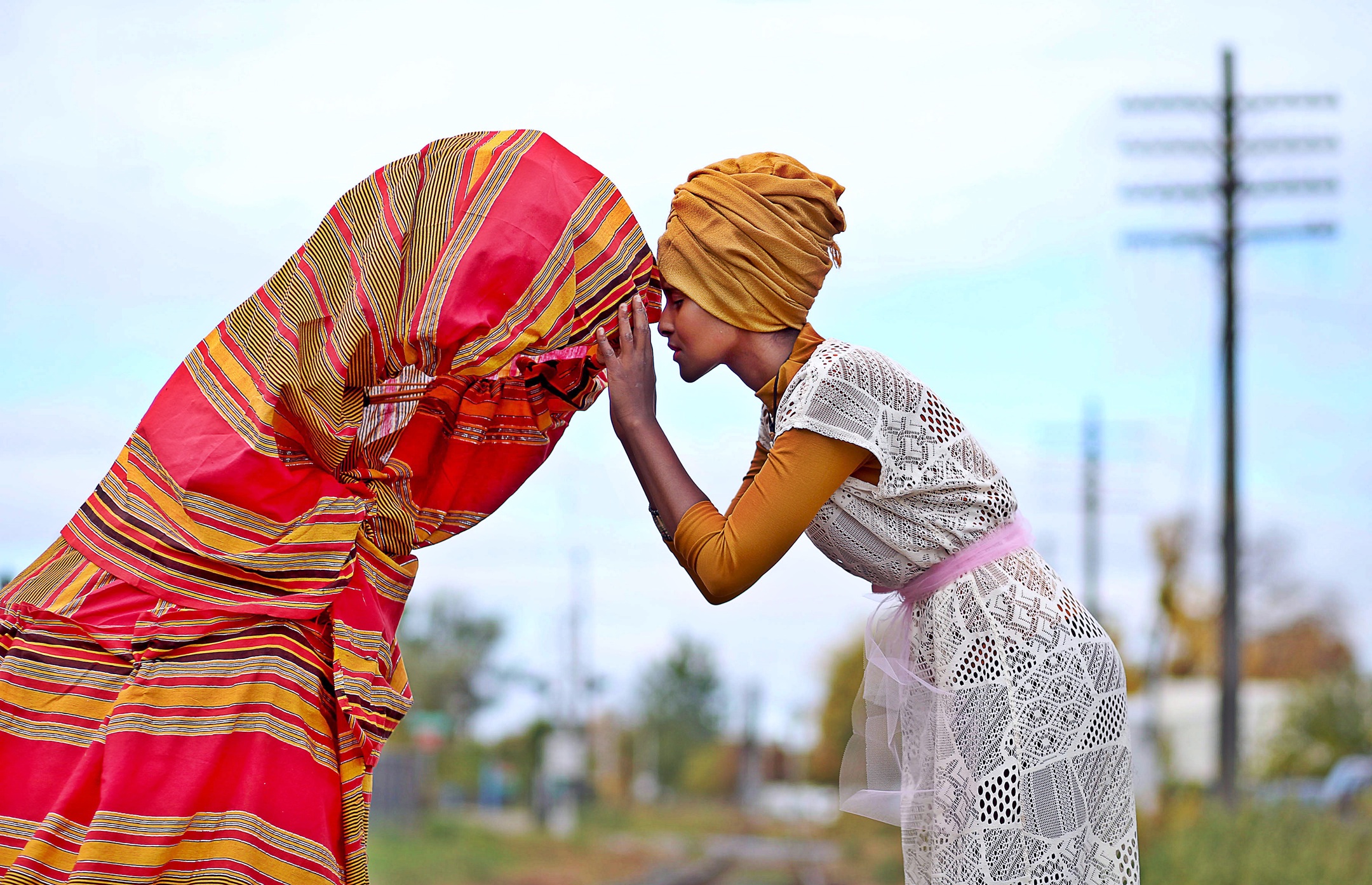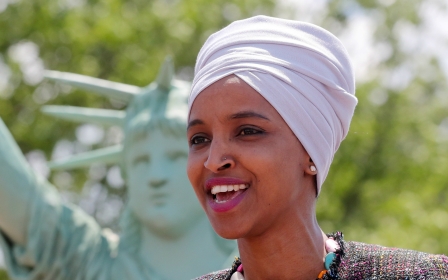'Trauma is inherited and we can’t heal unless we learn'

Ifrah Mansour was five years old when civil war broke out in Somalia, in 1991. Her family had just returned to Mogadishu from Saudi Arabia, where she was born.
An estimated 350,000 people died by 1992 of disease, starvation and the conflict that followed the overthrow of Siad Barre's military regime. Hundreds of thousands ended up fleeing the country, including Mansour's family, who sought shelter in Kenya's Dadaab refugee camp until they emigrated to the US in 1998, eventually settling in Minneapolis.
Today, 33-year old Mansour, a playwright, performer and visual artist, is one of the Twin Cities’ most vibrant creatives. The softly spoken petite woman is best known for her play, How to Have Fun in a Civil War, which she has performed across the US since 2015. The play is an expression of how childhood can still flourish in the midst of brutal hardship and disruption - turning painful family history into artistic creation.
The seven-year-old main character, played by Mansour, recalls the moments of light relief that existed alongside the fear and uncertainty. In one scene she pretends to eat dirt and stuff her nose with cigarette butts, the way she did when she was a child.
She brings other characters to life through impersonations, reenacting the way her mother would intricately braid her hair, or how she slept all day as an escape from reality.
Stay informed with MEE's newsletters
Sign up to get the latest alerts, insights and analysis, starting with Turkey Unpacked
Much of her work - on stage, in galleries, exhibitions, and using video - attempts to capture the complexity of the refugee experience. One of her most recent productions, My Aqal, involves setting up a replica of a traditional Somali nomadic hut made of thatch, which is used as a space to host performances and pop-up events on the themes of displacement.
As part of the roaming show, which she has so far taken to New York, Minnesota and Michigan, Mansour also runs workshops teaching people how to build an aqal with their own hands, with the aim of forging connections with the current global refugee crisis.
MEE caught up with Mansour before one of her performances in Minneapolis to talk about her aspirations for both her work and for refugees around the world.
MEE: What inspired the play, "How to Have Fun in a Civil War?"
IM: The play is made of my memories of fleeing civil war in Somalia. It is based on how somehow my parents were amazing and strong enough that they created a sense of safety, and I have a fond memory of the experience. In times like these, parents still have to be parents in the middle of chaos.
'War kind of feels like a wave coming at you'
- Ifrah Mansour
I have always been really interested in how we archive childhood memories - memories that my brain has put in a box. You end up blocking that whole experience unless you decide to revisit it to heal. My work is about how to heal from intergenerational trauma. Sadly, we are creating a world that is trauma-filled, especially for children. Currently in the States, there is so much that we are not addressing when it comes to trauma.
There is a risk of being traumatized again when revisiting trauma. But it can be done in a tender way. Once I started poking into my own traumas, I realised that, for example, I used to stutter as a kid and the first year of performing the play, I started stuttering again. I feel like I can heal. I know I can heal. Every time I do the play, I connect with somebody I never thought I would connect with. You go home and you sit with that and it warms your heart.
MEE: So how do you have fun during civil war?
IM: You have fun during civil war with a lot of childhood innocence. My parents created a sense of safety despite the chaos. My parents were doing a very good job at not telling us why we were leaving. They really kept us out of these important details.
I thought we were just vacationing. My dad told us we were going to his sister’s house which was in another town. She was a fancy aunt. She would always bring us back something really cool and fancy. In the play she’s called “fancy aunty”. My mom didn’t think of grabbing our passports or birth certificates. Just clothes and milk for my little sister. I just grabbed the doll that my dad gave me that day. I did also grab fancy dresses that my aunt got me.
Because of that journey [between Mogadishu and Kenya] I saw things I could never see before. I saw a birth on the side of the street. The night before we left, we could hear the guns at a distance. War kind of feels like a wave coming at you. As the day broke, you have a deeper sense that guns are coming closer to you.
MEE: What has the reaction been to the play?
IM: After watching the play, Somali audiences were reminded of their own experience, and wanted to use my work as a starting place for conversations with their own American-born children. Educators said my work helped them understand not just Somali refugees, but other refugees in Minnesota. Non-immigrants and non-refugees said my work has singularly shifted their understanding of the refugee/immigrant experience.
During our post-show discussion for The Guthrie Theater Performance [Minneapolis, Feb-March 2018], a ten-year-old Somali audience member was the first person to speak. She told us how the play reminded her of the death of her two younger siblings. She then told us that she and her mother took a picture at the funeral and that it made her happy for a while.
To witness this ten-year-old tell her story in a theatre full of complete strangers helped me recognise the play’s role in helping us unpack painful but important memories of history as new Minnesotans.
Trauma is inherited and we can’t heal from what we don’t know unless we learn. We need more trauma-informed artwork to create a safe space for these healing conversations to take place.
MEE: Right now, you’re travelling around with your aqal, what has the experience been like?
IM: When I was in college, I went to the Somali Museum for the first time and I saw the aqal, the traditional nomadic hut. The last time I saw a aqal was in the refugee camp. This aqal at the museum was intricately prepared with well-crafted arches, and handwoven detailed thatch. This aqal is a true nomadic cultural expression. The aqal that I lived in was made out of emergency and in the middle of the desert without the usual proper materials to make as elegant as the aqal at the Somali Museum.
In 2017, I had an opportunity to make an outdoor art project and embarked on my first aqal build along with elders [in Currie Park, Minneapolis]. We weren’t able to get the traditional materials so we used what we could find in Minnesota, which is burlap in place of the traditional thatch, and sticks from the Mississippi River. The little kids really wanted to be part of it so everyone made handprints on the burlap as decorations.
The aqal was built by - not only by elders - but everyone who was at the park that day. We even had Congresswoman Ilhan Omar show up to enjoy the aqal at night. I worked closely with a powerful community activist, Abdirahman Mukhtar, who does a weekly pizza and shaah [Somali tea] night as a way to hold a positive space and male mentorship and connecting the young males to needed resources.
I always liked making things with my hands. Even when I was in the refugee camp and I was missing my beautiful dolls in Somalia, I remember I used to make dolls out of sticks. So when I made the puppet for the play, it brought so much beautiful childhood creative memories back to me and I wanted to create these childhood memories for American-born Somali children and get them excited about their own ancestral wisdom of building an organic traditional hut.
[Through this project] I wanted to unearth our nomadic traditions, to speak on behalf of what we are facing now as black, Muslim refugees in America. There is an increase in young East African deaths due to prescription drug use, as well as gun violence. My heart was broken when I learned that a young girl overdosed near our aqal and there was no news coverage of it. We did a candlelight vigil to remember those we have lost and those who still need us.
MEE: Do you feel that your work speaks to refugees from other places?
IM: Minnesota has the highest resettled refugee population in the nation, so my work has attracted various refugees from different cultural backgrounds. Many Arab Americans connected to the themes of generational divide and cultural expression.
A lot of communities with forced migration trauma don’t want to talk about their trauma and risk the next generation growing up without knowing their full history. I truly believe that the more we tell our story, the more we heal. The more allies hear our story, the more you understand who we are.
A Syrian audience member approached me at the end of the post-show discussions. He told me how he Facetimes his aunt in Syria and he would hear bomb sounds in the background as she cooks dinner for the family. There is this apologetic strength to keep living and going despite the chaos in our world. This is the true strength and resilience of refugees and those currently living in war conflict zones.
MEE: What did you learn from the process of My Aqal and how is it relevant to refugees from all over the world?
IM: Refugees truly understand what it means to find yourself in the middle of nowhere and make a shelter with nothing. Beyond the physical displacement, there is this psychological displacement, yearning to finding a new home that doesn't try to erase you off again. [The] My Aqal project inspires people to think about the physical as well as the psychological journeys of forced migrations and building shelter. With the workshop, every aqal builder makes an intention to make shelter for somebody in need. There’s enough food and land to feed and house everyone, but there isn’t enough human heart connection to make this happen.
This story was produced with support from the Round Earth Media programme of the International Women’s Media Foundation [www.iwmf.org]
Middle East Eye delivers independent and unrivalled coverage and analysis of the Middle East, North Africa and beyond. To learn more about republishing this content and the associated fees, please fill out this form. More about MEE can be found here.







